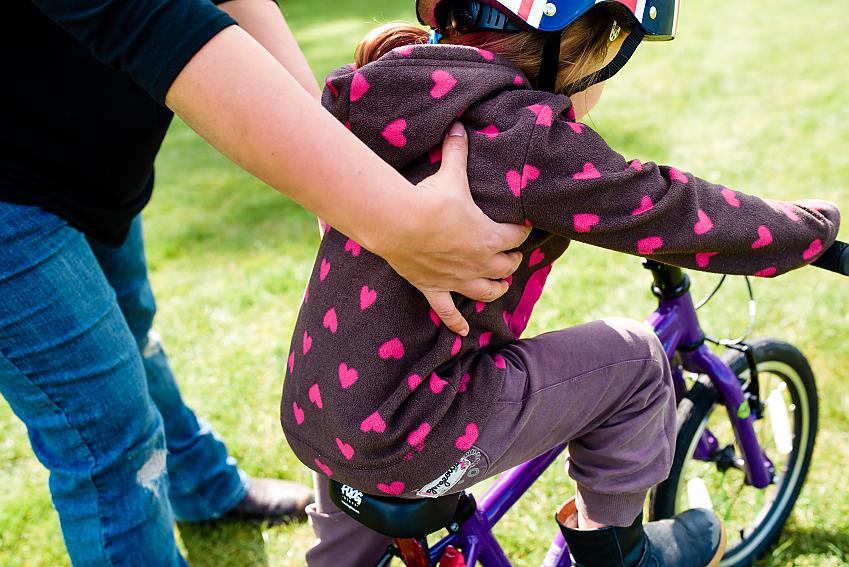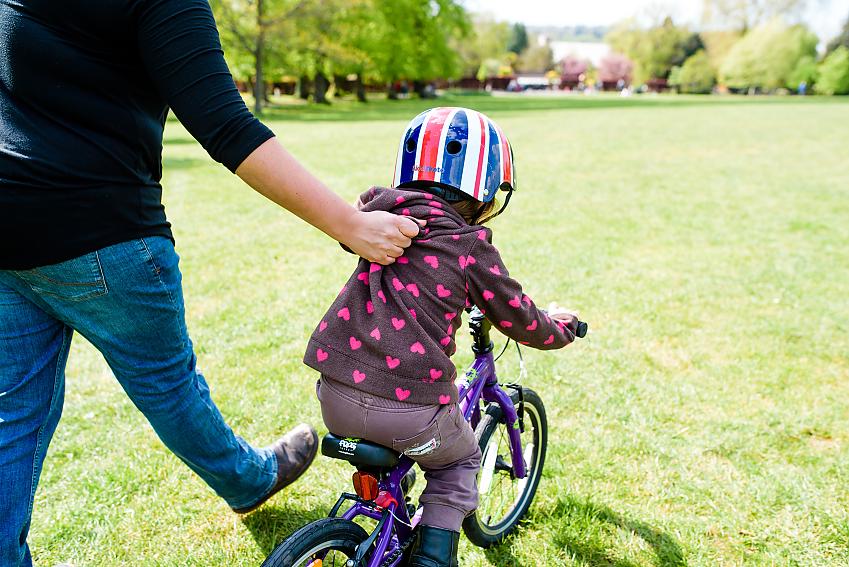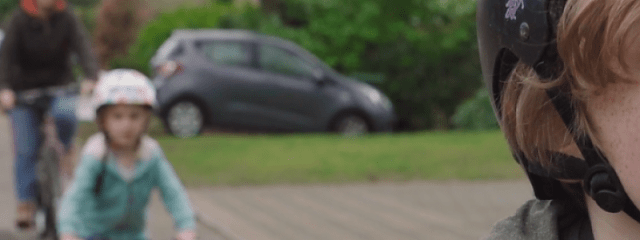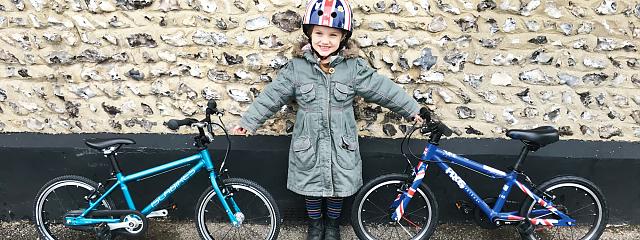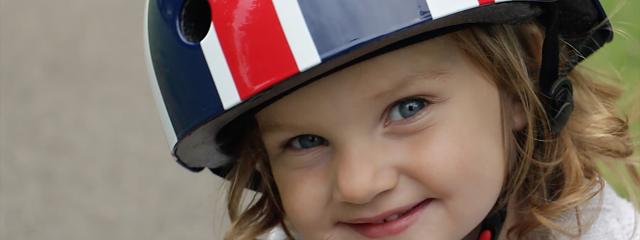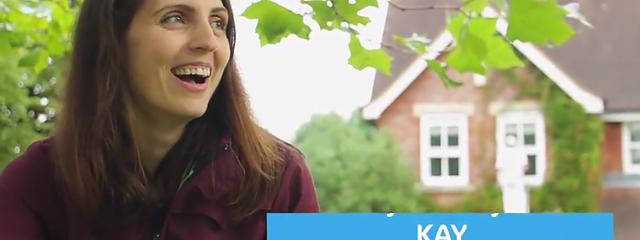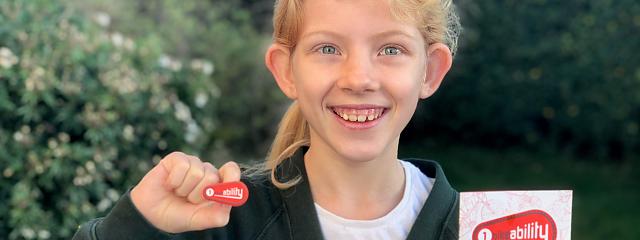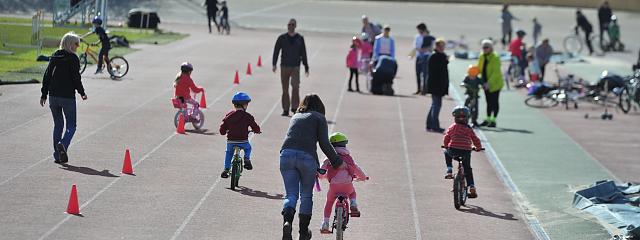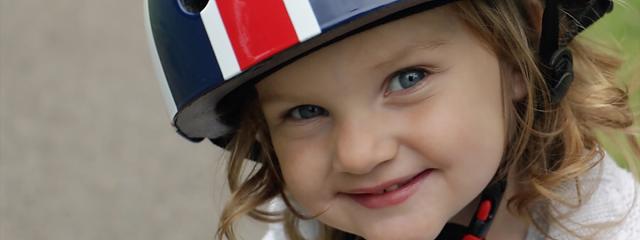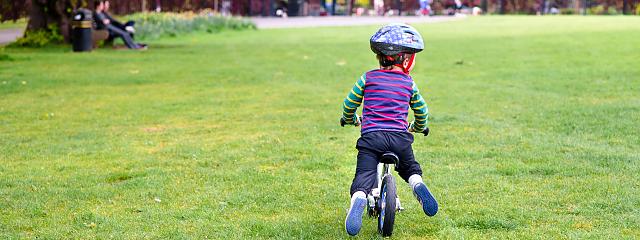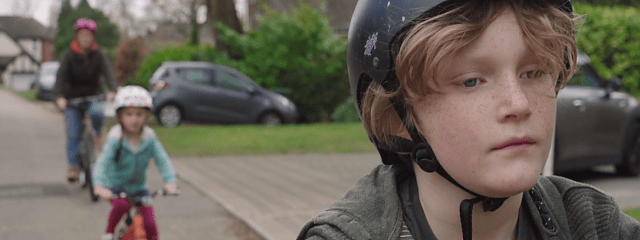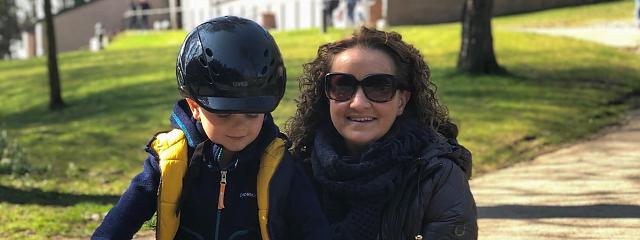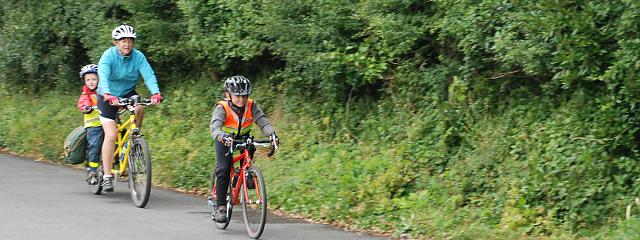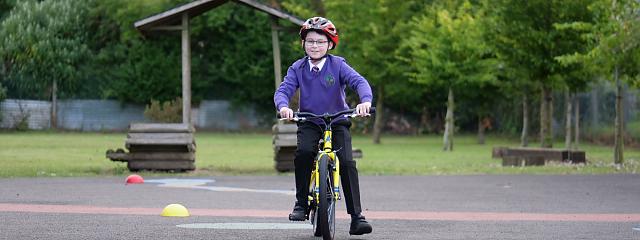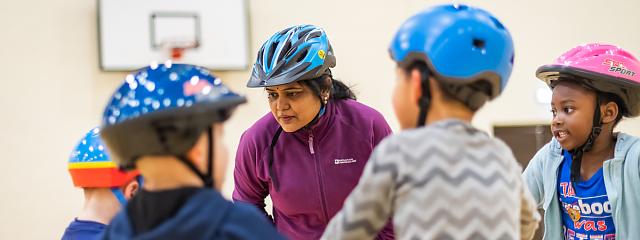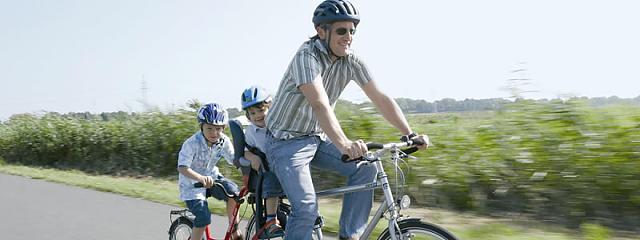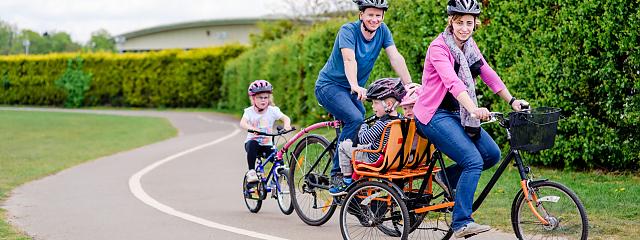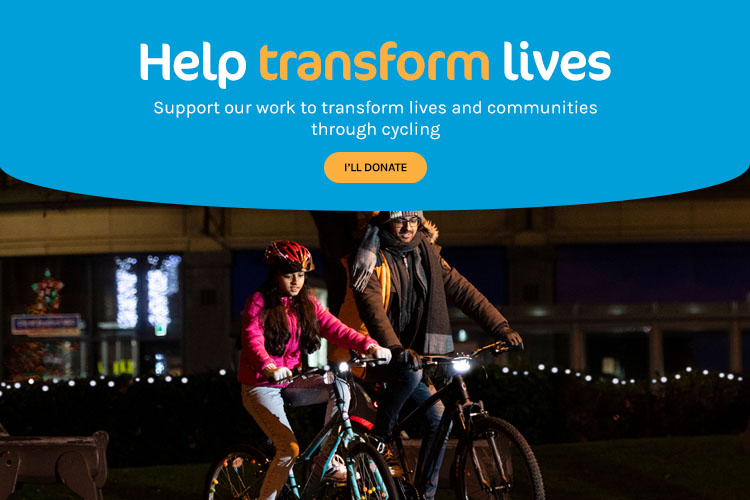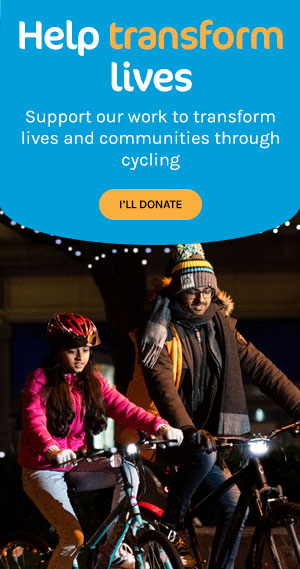
Video: How to teach your child to ride a bike – updated
Video: How to teach your child to ride a bike – updated
This step-by-step video guide will show you how to teach a child to ride a cycle without using stabilisers. We also provide written instructions for those who prefer reading to watching. The steps can be taught in short sessions, rather than all on one day – but be guided by the learner.
Do not overtire the learner or they may be put off cycling forever! Half-an-hour at a time is enough for young children, while older ones and adults may cope with longer. Learning to ride a bike is tiring, especially for older people – the brain is having to create new pathways and may need time to absorb what it’s learnt.
However, it’s amazing how beginners often seem to struggle, only to come back and master a new technique straight away.
It’s best to finish the session on a high, even if they haven’t managed to pedal unaided, and stop before boredom or frustration set in. Remember, if you seem confident and relaxed, so will your trainee!
Watch the video
Getting ready to cycle
It is best to use a hard, level surface, rather than grass. Ideally, it should have a gentle sloping gradient. Make sure your chosen location is traffic free, if possible, but keep a wary eye out for pedestrians, animals and parked vehicles.
Check the child’s clothing is appropriate and the helmet, if worn, fits correctly with the straps not too loose or too tight; it should be seated over the front of the rider’s head, not on the back of it like a bonnet. They may also wish to wear cycling gloves or mitts, as small hands can get sore easily.
Keep a drink and a few snacks handy to keep up morale and stamina.
Getting on and off the bike
Use a balance bike or take the pedals and stabilisers off a normal bike to start with.
Make sure the trainee can reach the brake levers and can put their feet comfortably on the ground when seated on the saddle. If necessary, lower the saddle to the lowest setting.
Teach the rider to use the brakes by asking them to push the bike along while dismounted and squeeze each brake in turn. Once they have figured out which brake stops which wheel, they should then learn to use them together – using only the front brake increases the risk of the rider going over the bars; use just the back one, and the rear wheel may skid.
They should practise stopping the bike a couple of times by giving both brakes a gentle squeeze.
Now the learner knows how to stop, ask them to get on the bike by squeezing the brakes together to hold it steady, then swinging a leg over the saddle.
It is a good idea to always ask the trainee to stand and mount on the left-hand side of the bike, as this is the side that is usually away from any traffic.
The child’s weight should be on the back of the saddle as this is where their centre of gravity should be.
They should sit up straight and relax their arms and hands – the handlebars are for steering, not for clinging on to!
Scooting
Ask the learner to let go of the brakes and start scooting. They should use the bike like a hobby horse and push along the ground using their feet. Encourage them to keep their fingers on the brake levers so they can stop whenever they want.
Tell them to look forward, in the direction they want to go, rather than down at the ground – this is a bad habit to get into.
Practise stopping and starting a few times, making sure the learner is using the brakes to stop, rather than their feet.
After a while, the rider should start to feel when they are balancing the bike by steering it in the direction of fall. They should be able to lift their feet off the ground for longer stretches each time.
Balancing
For most people, this is instinctive. For others, you may need to show them how by sitting them on the bike and then, while you stand in front of the bike facing them, holding the front wheel between your knees to stop the bike wobbling, ask them to lift their feet off the ground on to the pedals.
Ideally, the trainee should let go of the handlebar too, as this shows them they will have better balance on the bike by sitting upright and not learning forwards – but some may not be confident enough to try this!
If the bike feels light, they are balancing it by themselves. Ask them to put their hands back on the handlebar and you can then show them how to lean into a steer by turning the handlebar. They will see that if they lean the other way, the bike will go one way and they will go the other! Think of it as being a bit like spinning plates on a stick – the stick is moved so that it stays under the plate.
Keep up the encouragement, even if progress seems slow.
Once the child is able to scoot the bike for several metres – you may need to give them a gentle nudge to get them moving fast enough to make the bike balance – they are ready to move on to pedalling.
Ready to pedal
Replace the pedals. Then show the rider how to ‘set the pedal’ by getting them to sit on the saddle, plant one foot (usually the left one) firmly on the ground, hold the brakes and – with the right foot – hook the right pedal up into the two o’clock position (imagining the face of a clock around the pedal).
The ‘two o’clock’ position is where the pedal is normally in line with the down tube of the bike, and is where there is maximum forward momentum – ideally this is where the rider’s feet will be when they stop the bike too.
Hold on under their arms while they practise pushing off with the right pedal.
Once they can push off and then lift their left foot onto the left pedal without looking down, they can start pedalling forwards.
You may need to still support them while they learn this new action and combine it with balancing and steering. Hold them gently under the arms or by gently holding the middle section of the back of the child’s top.
Keep reminding the trainee to keep their head up, look ahead not down, keep a straight back, loosen the shoulders and relax!
Once you feel the bike and rider are able to pedal, balance, steer and stop unaided, the magic moment has arrived when you can let go – although again, they may need you to nudge the bike to keep it moving fast enough.
Remind them to keep pedalling or the bike will stop – but ask them to stop if going too fast or about to hit something!
Time to let go
At this point, many trainees may not realise they are riding a bike without help and will be amazed when they stop and turn round to see you are now some distance away.
Congratulate them on their achievement and pause for a breather.
If they are not too tired or sore, keep practising until they are starting, stopping and riding unaided in a straight line, more or less.
Once they can ride confidently, the child may be tempted to show off their new skills straight away, but it’s best to stop before doing too much as they may become demoralised if further progress is slow.
Help!
Bikeability is the Department for Transport’s national cycle training programme for schoolchildren in England. If you would like more help teaching a child to ride a bike, you can contact a local Bikeability provider.




